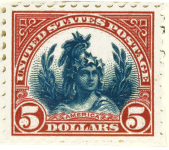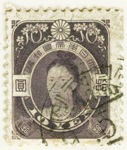
Discussion - Member to Member Sales - Research Center

Discussion - Member to Member Sales - Research Center

White Wattles
Die I. This is the original state of the die found in the earliest printing. The shallow lines of engraving were exaggerated by the use of an unsatisfactory ink in a characteristic Royal Blue shade which had a tendency to be stripped from the plate by the wiper. The die characteristics are:
1) The wattles and wattle leaves in each corner are very white with little shading.
2) The King's ear is unshaded and the chin is badly defined.
3) "TA" of "POSTAGE" at top right is pronouncedly joined at the foot.
4) A characteristic of the ink stripping is that it tended to produce two breaks in the inner left frame opposite the lower half of the portrait oval.

The wattles and wattle leaves in the left and right corner are very white with little shading.

The King's ear is unshaded and the chin is badly defined.

"TA" of "POSTAGE" at top right is pronouncedly joined at the foot (The ink marking on the top end of "E" and the strokes through the "E" was made in the printing process; the microscope can pick-up the slightest imperfection on stamps that we would normally not be able to see).

Two breaks in the inner left frame opposite the lower half of the portrait oval (can be more pronounced in some stamps).
Joined "TA"
Die I The introduction of a new ink formula solved the ink stripping problems. This improved the appearance of the stamps, correcting the defects from the noted with the "white wattles"; although the outline of the chin remained unclear. However the joined "TA" remained to a lesser degree.

Joined "TA"

More definition in wattles and leaves

The outline of the chin remains unclear
Tapered "T"
Die IA The joined "TA" flaw was addressed by retouching the two copper plates. On each unit the letter "T" and "A" were cut apart, producing a characteristic tapering of the lower part of the "T". The hand retouching means there is inevitably some variation between units.

Tapered "T"

1 Member
likes this post.
Login to Like.
Hi Rob
Lovely closeups, are they taken with the new microscope.
So easy to see what you are explaining.
Regards
Horamakhet

Login to Like
this post
Hi Horamakhet
Yes, the images were taken with the new microscope. Notice the "G" and "E" of 'POSTAGE"how they are damaged/or recut? It's amazing what the microscope can do.
The microscope picked up quite clearly pen marks on stamps that couldn't be seen by any of my magnifiers.
I bought the microscope to help me with my book on ½d kangaroos from 1938-1960, so I might as well check all my stamps and upload all the varieties in better detail.
I was going to use the microscope on my 1947 double overprint B.C.O.F. on cover, but I gave the cover to Chris Ceremuga to expertise.
Rob

Login to Like
this post
Member ACCC (Australian Commonwealth Collectors Club of NSW)
16 Aug 2019
09:28:11pm
I will be constantly adding varieties to this page.
White Wattles
Die I. This is the original state of the die found in the earliest printing. The shallow lines of engraving were exaggerated by the use of an unsatisfactory ink in a characteristic Royal Blue shade which had a tendency to be stripped from the plate by the wiper. The die characteristics are:
1) The wattles and wattle leaves in each corner are very white with little shading.
2) The King's ear is unshaded and the chin is badly defined.
3) "TA" of "POSTAGE" at top right is pronouncedly joined at the foot.
4) A characteristic of the ink stripping is that it tended to produce two breaks in the inner left frame opposite the lower half of the portrait oval.

The wattles and wattle leaves in the left and right corner are very white with little shading.

The King's ear is unshaded and the chin is badly defined.

"TA" of "POSTAGE" at top right is pronouncedly joined at the foot (The ink marking on the top end of "E" and the strokes through the "E" was made in the printing process; the microscope can pick-up the slightest imperfection on stamps that we would normally not be able to see).

Two breaks in the inner left frame opposite the lower half of the portrait oval (can be more pronounced in some stamps).
Joined "TA"
Die I The introduction of a new ink formula solved the ink stripping problems. This improved the appearance of the stamps, correcting the defects from the noted with the "white wattles"; although the outline of the chin remained unclear. However the joined "TA" remained to a lesser degree.

Joined "TA"

More definition in wattles and leaves

The outline of the chin remains unclear
Tapered "T"
Die IA The joined "TA" flaw was addressed by retouching the two copper plates. On each unit the letter "T" and "A" were cut apart, producing a characteristic tapering of the lower part of the "T". The hand retouching means there is inevitably some variation between units.

Tapered "T"

1 Member
likes this post.
Login to Like.

re: Varieties Of The KGVI Stamps
Hi Rob
Lovely closeups, are they taken with the new microscope.
So easy to see what you are explaining.
Regards
Horamakhet

Login to Like
this post
Member ACCC (Australian Commonwealth Collectors Club of NSW)
18 Aug 2019
04:02:02am
re: Varieties Of The KGVI Stamps
Hi Horamakhet
Yes, the images were taken with the new microscope. Notice the "G" and "E" of 'POSTAGE"how they are damaged/or recut? It's amazing what the microscope can do.
The microscope picked up quite clearly pen marks on stamps that couldn't be seen by any of my magnifiers.
I bought the microscope to help me with my book on ½d kangaroos from 1938-1960, so I might as well check all my stamps and upload all the varieties in better detail.
I was going to use the microscope on my 1947 double overprint B.C.O.F. on cover, but I gave the cover to Chris Ceremuga to expertise.
Rob

Login to Like
this post


